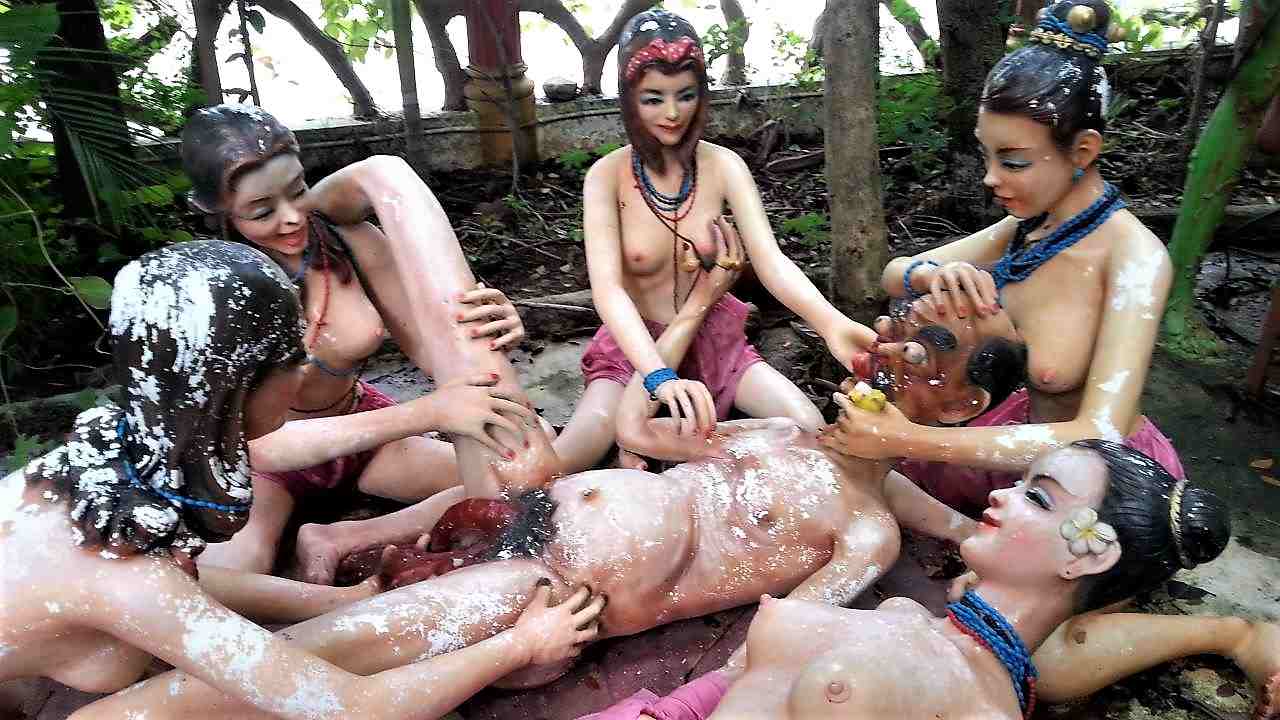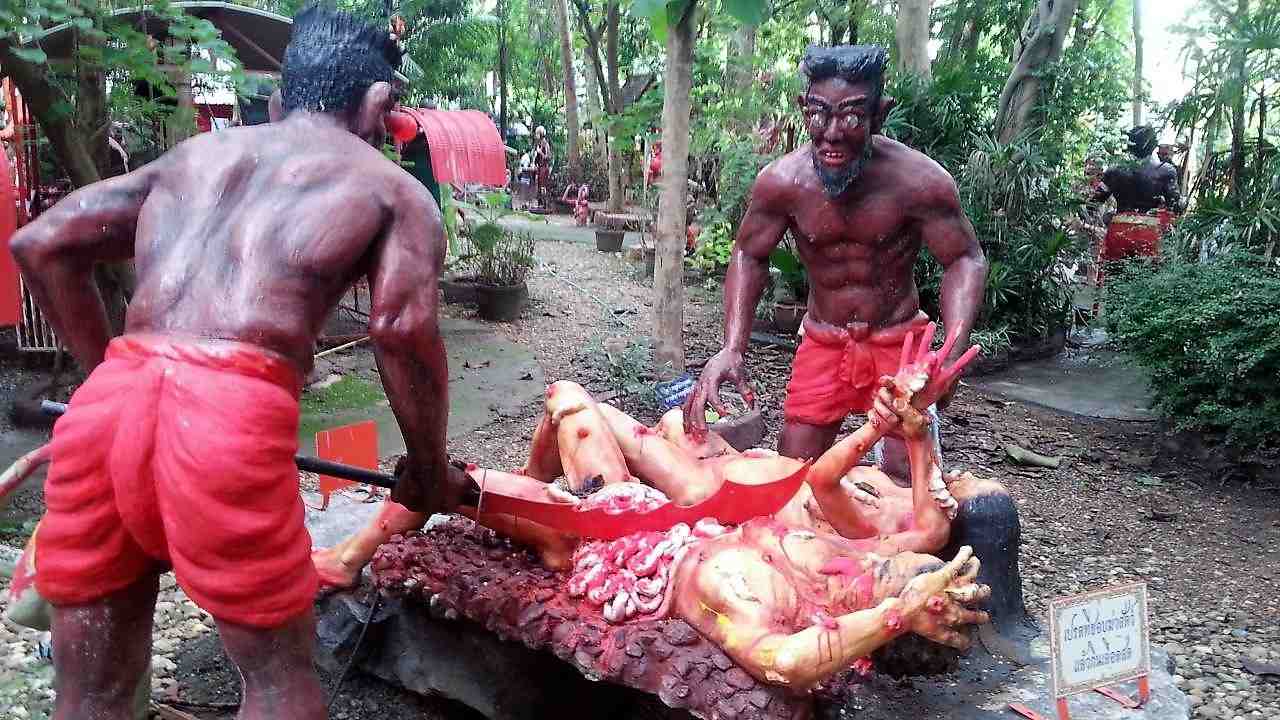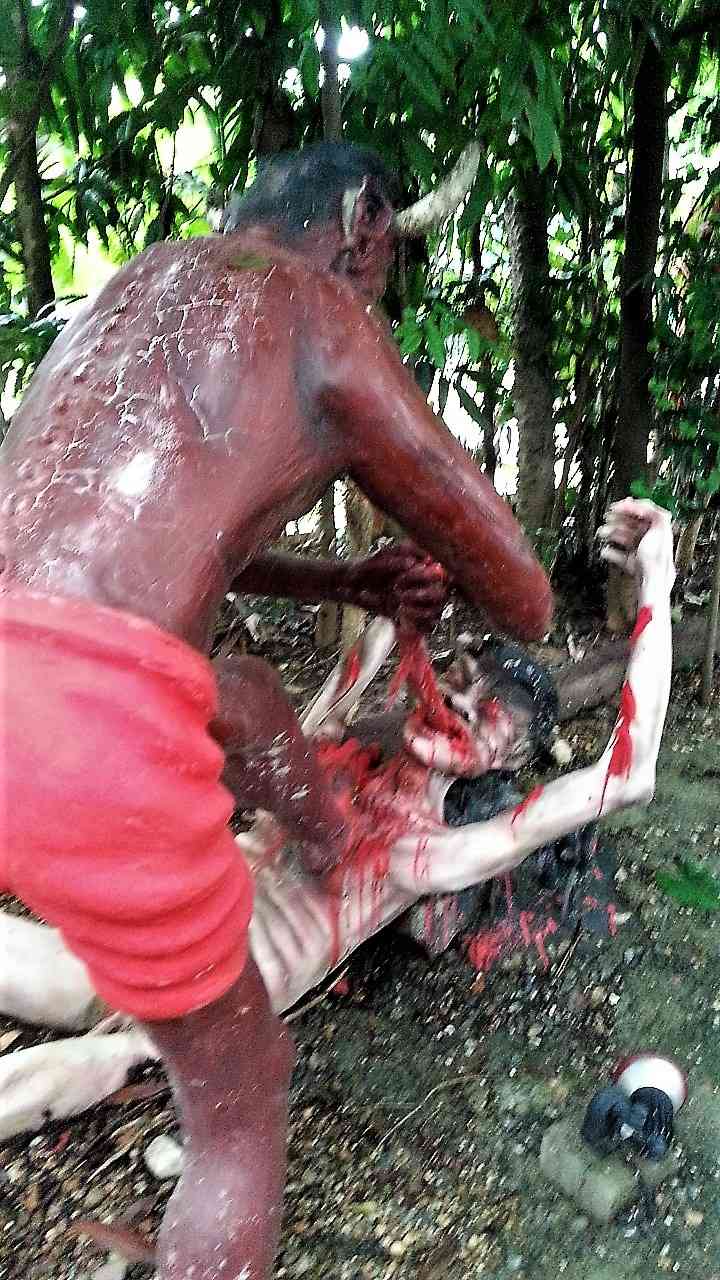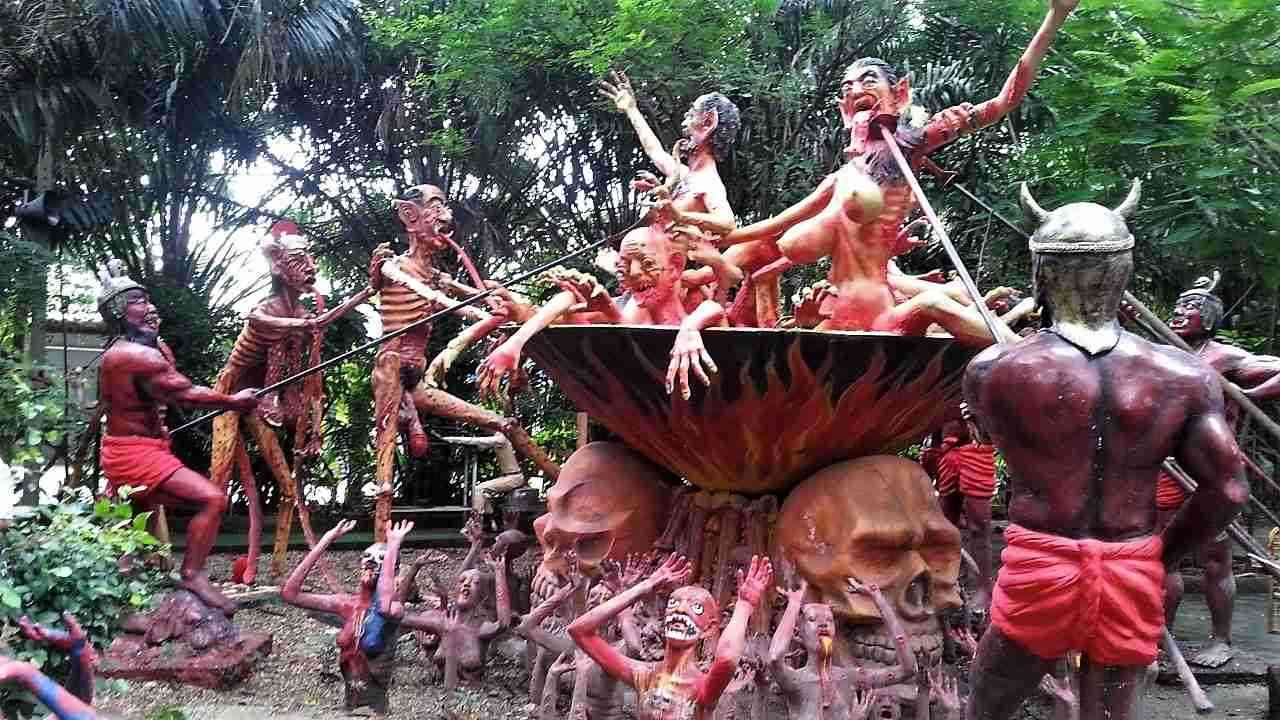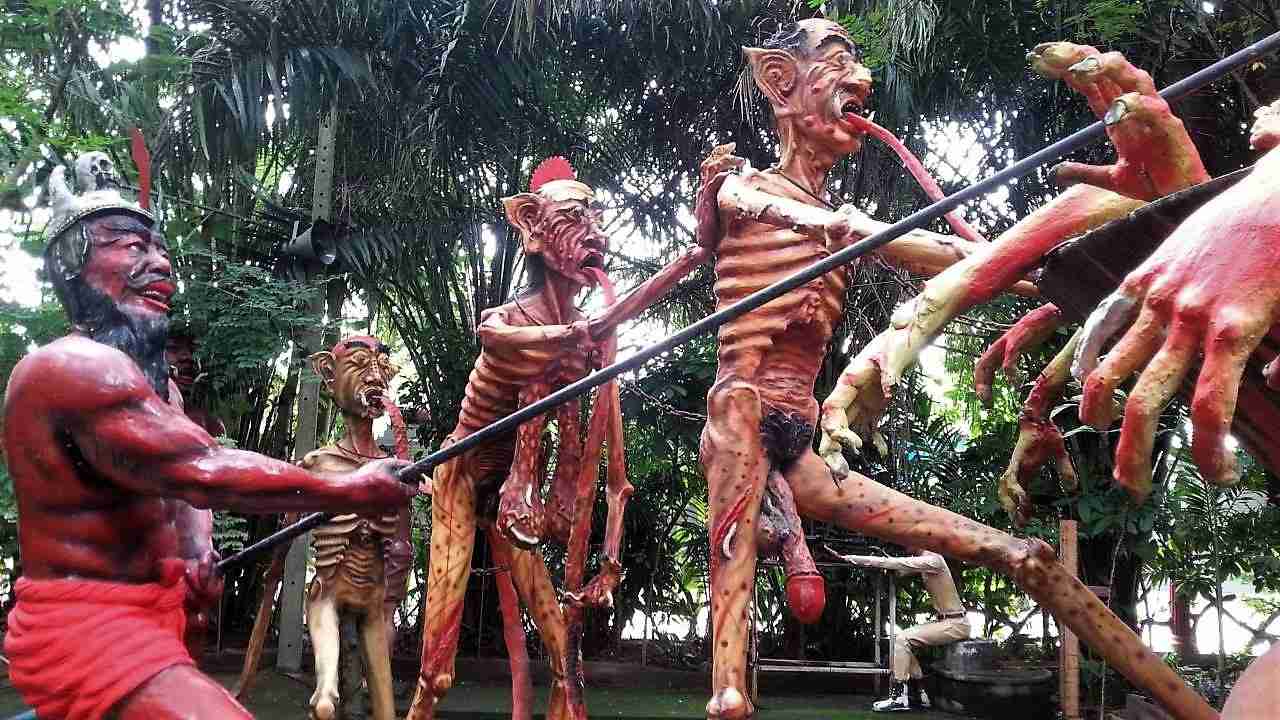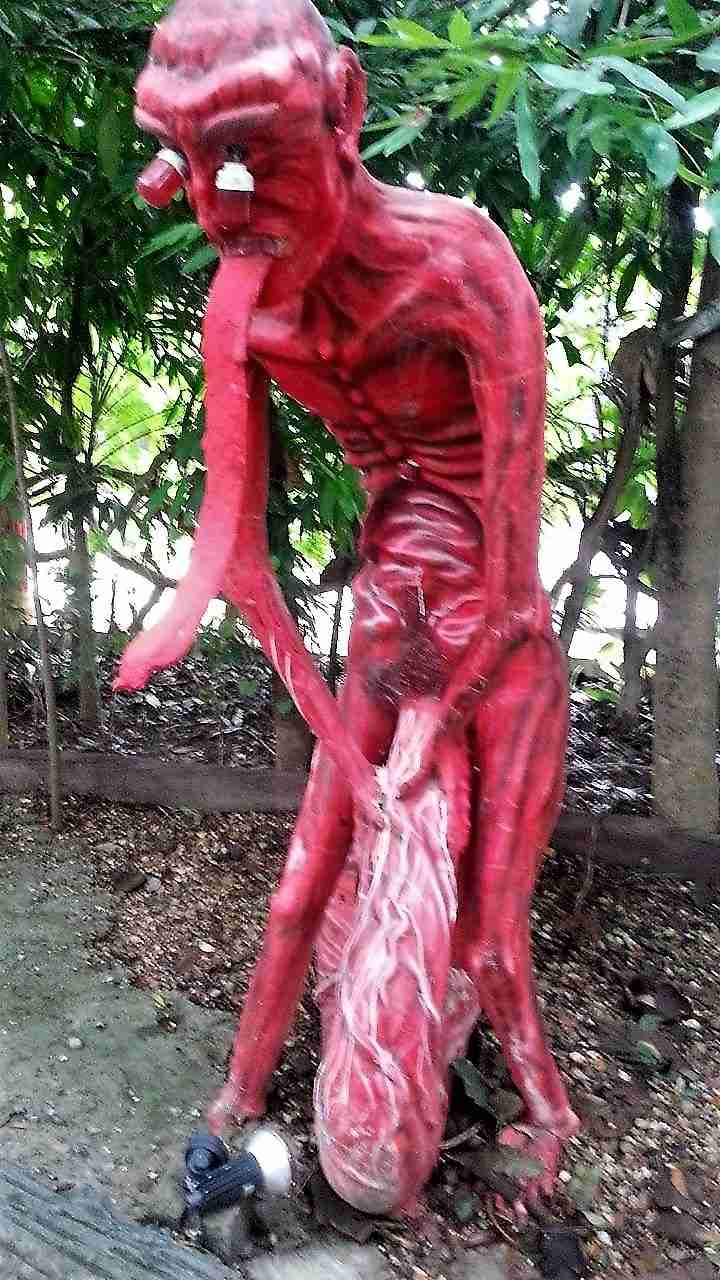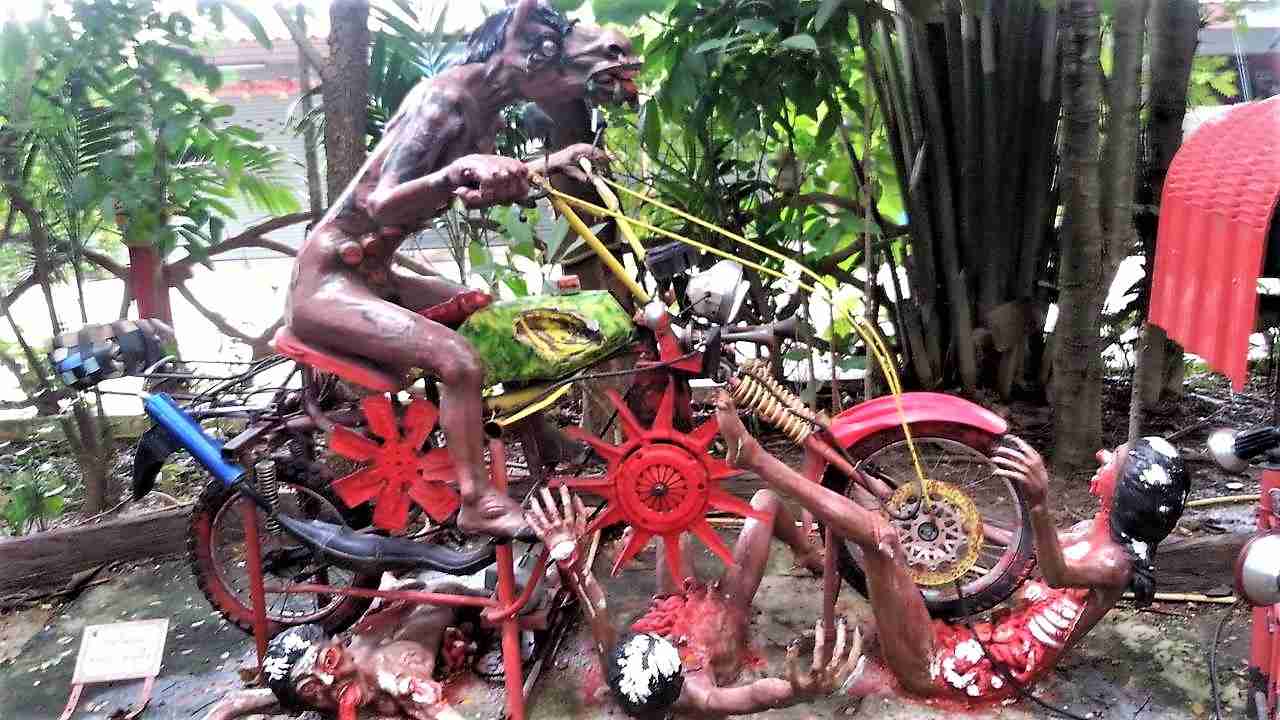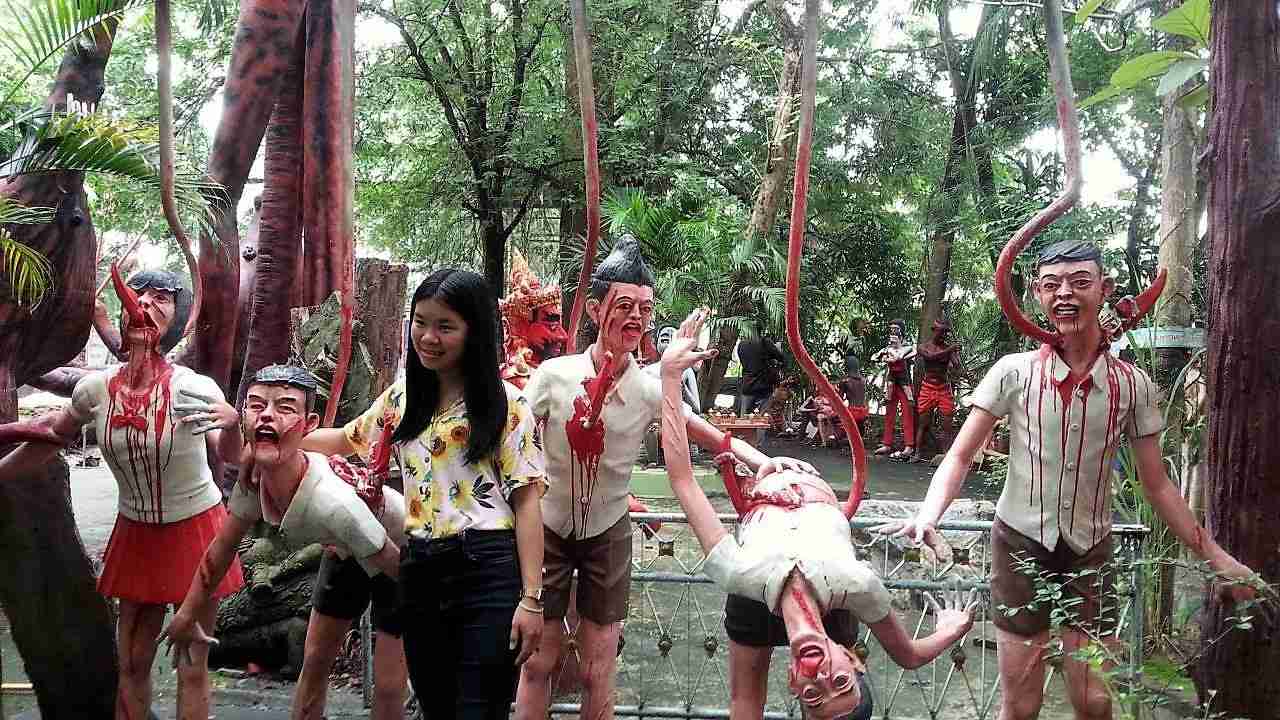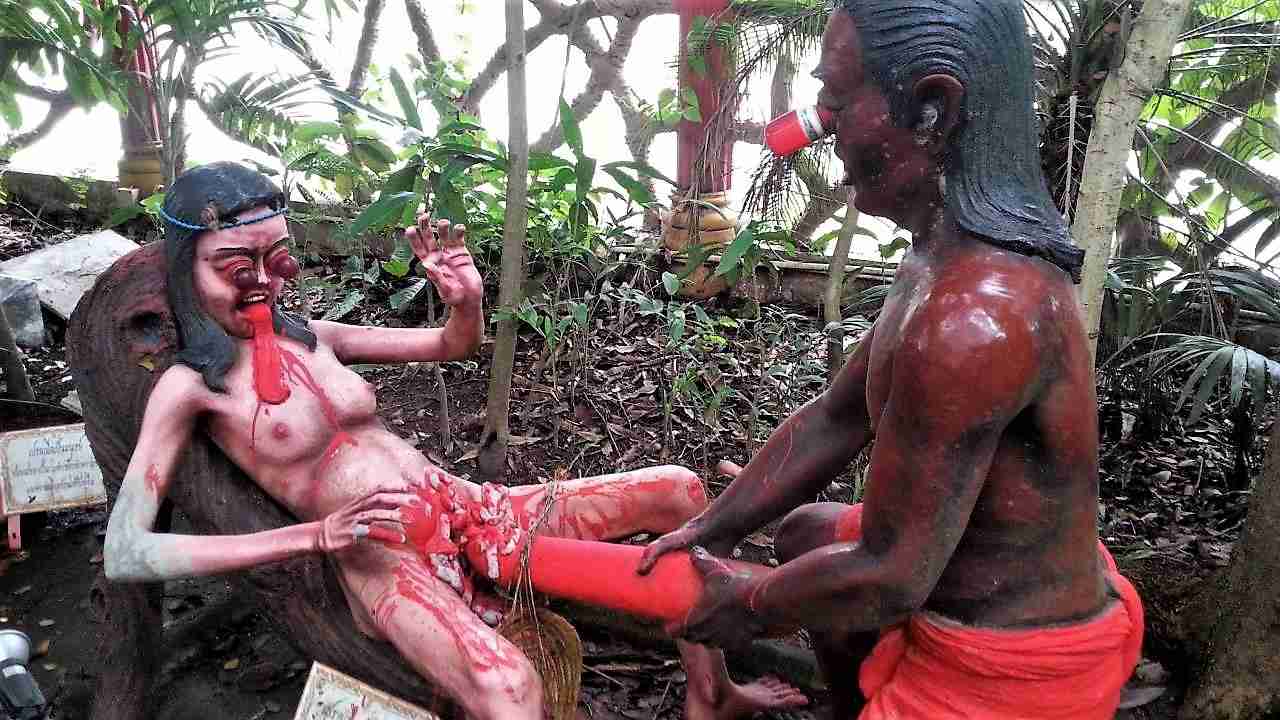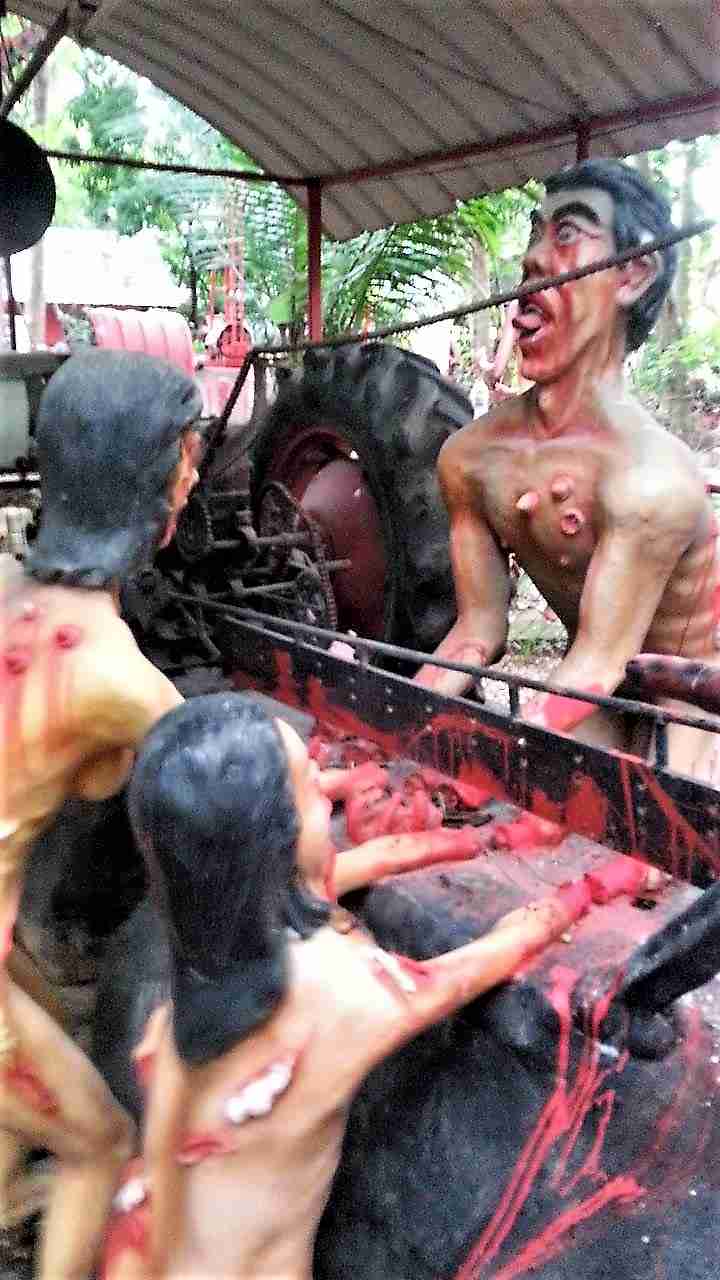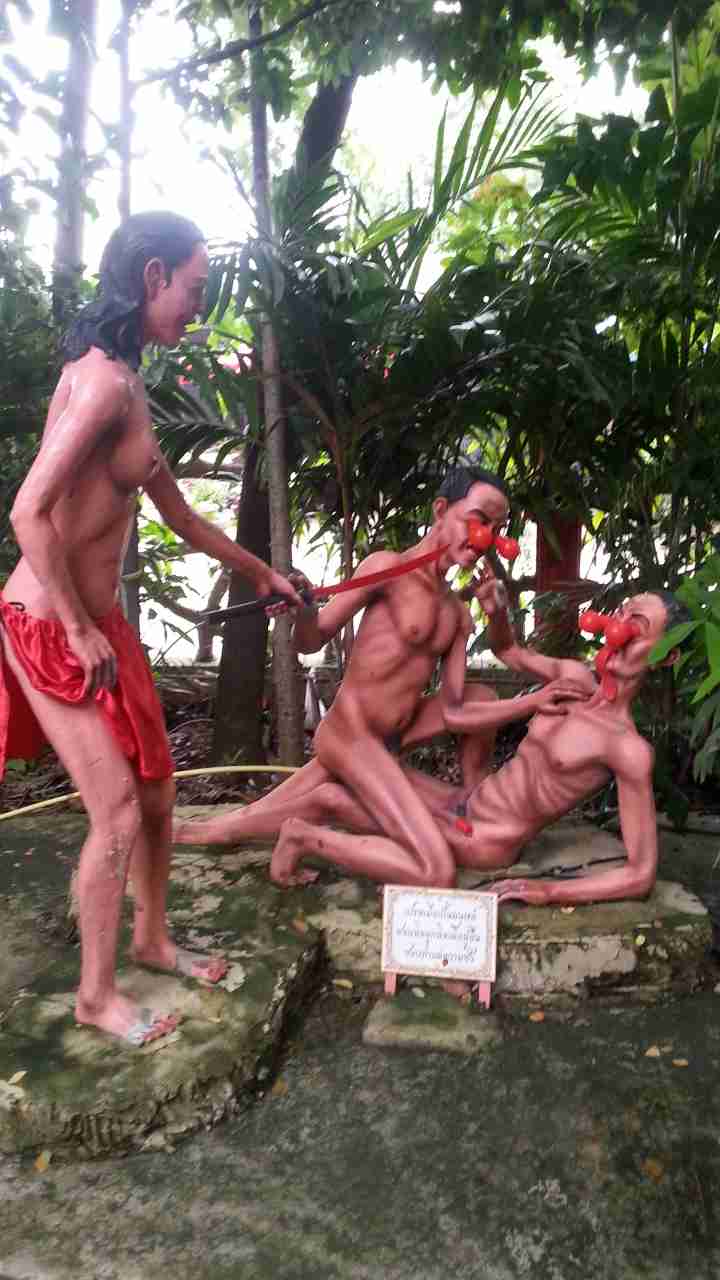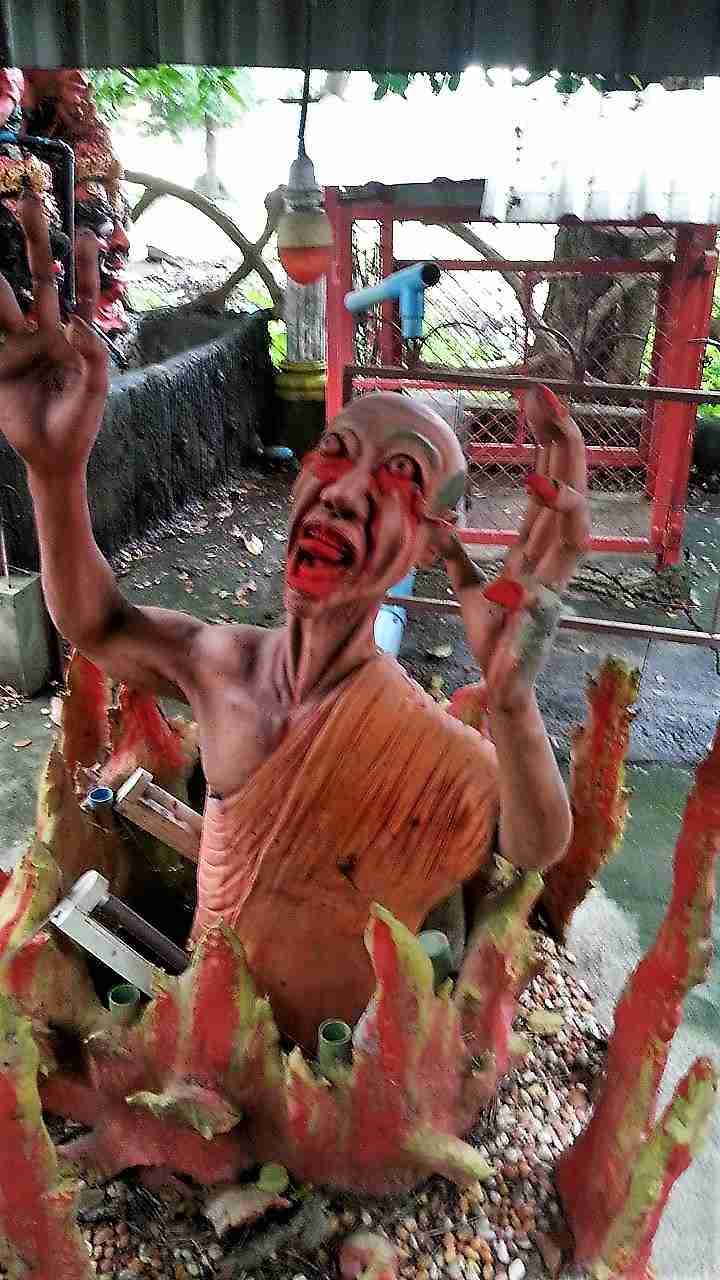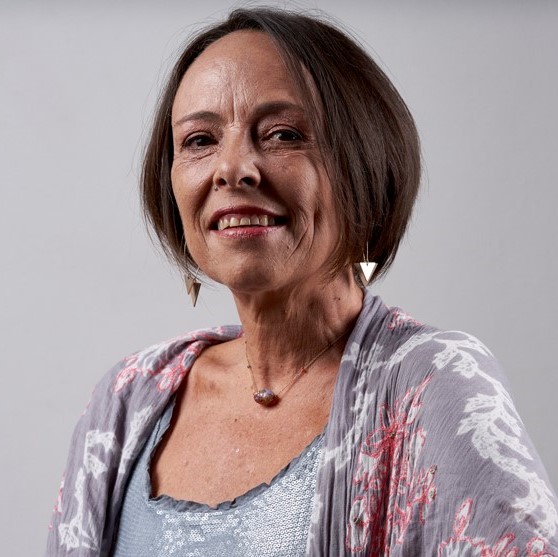Buddhist Heaven and Hell
A strange day in Wat Mae Kaet Noi makes me wonder about
the value of appropriating ideas we don’t fully understand

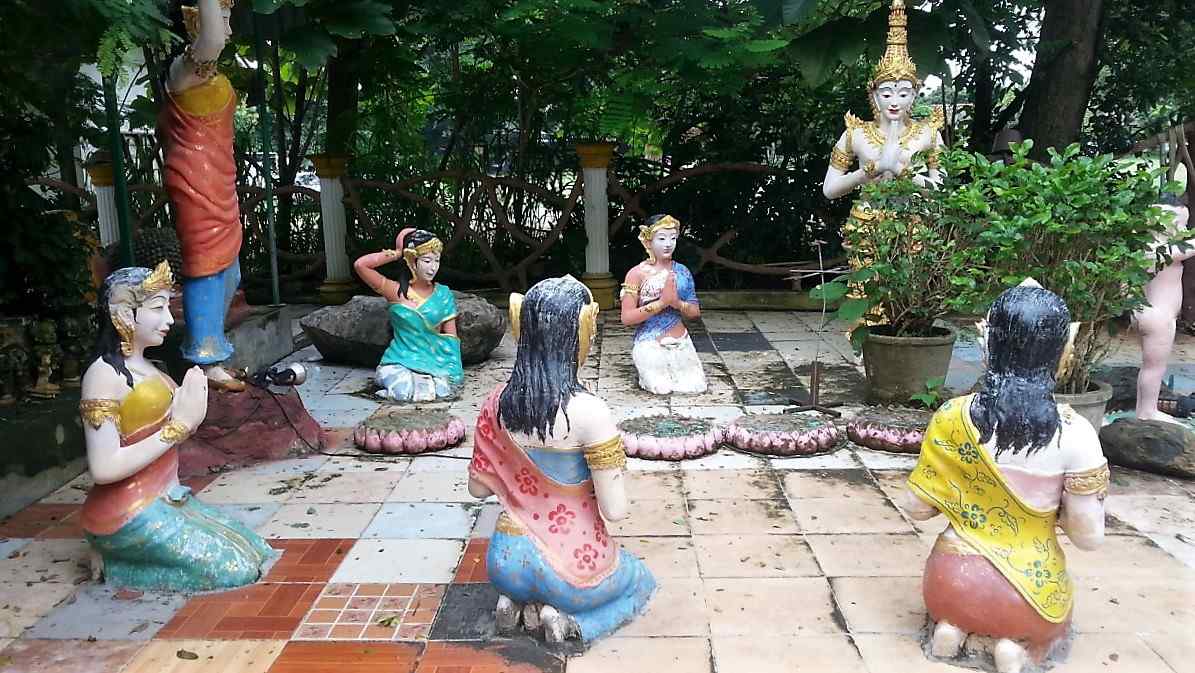
Wat Mae Kaet Noi, Chiang Mai, Thailand
“Come, let’s go” Kwan said as she entered the car, “I’ll take you somewhere that will shock you.” I pulled a questioning face, but she just smiled wickedly, and turned the engine on.
We were near Mae Jo University, beyond the second ring road encircling the picturesque old center of town. Kwan turned into a sideroad, followed a canal watering some verdant fields, and parked near what looked like the entrance to a small, rural temple complex.
“What? The temple”? I asked, trying to hide my disappointment. I had seen so many already, and these smaller ones were hardly ever worth the time from an artistic point of view.
“You’ll see,” Kwan muttered, fumbling with keys, bag, and water bottle. She was my friend and massage teacher, helping me perfect the art of stretching sore bodies. Her English was rudimentary, but her touch so convincing that in her classes I never felt confused.
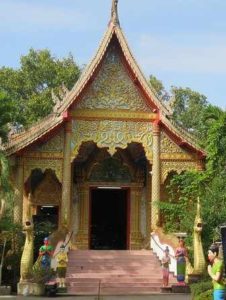 We passed the temple’s entry arch, and reached a sort of tarred courtyard fringed with a few small temples and what looked like the monks’ lodgings. There were sellers offering incense and lotus flowers arranged in pretty offerings, or food baskets wrapped in a saffron cloth which a devout follower could donate to a monk.
We passed the temple’s entry arch, and reached a sort of tarred courtyard fringed with a few small temples and what looked like the monks’ lodgings. There were sellers offering incense and lotus flowers arranged in pretty offerings, or food baskets wrapped in a saffron cloth which a devout follower could donate to a monk.
The temples looked modern, pretty but nothing special, the usual thin and tall structures with tiled roofs and those pointed extensions representing the mythical bird Garuda, protector of great fame, the whole twinkling from the reflected light of the many mirror mosaics.
I looked for details to admire, wanting to sound thankful, but found none. The artistry was poor, the colors too bright – why were we there?
“Kwan?” I singsang. “What’s so shocking about this place?”
“Come!” she exclaimed with devilish eyes. “The interesting stuff is behind, over there.”
Over there was a peeling metal fence, cut by a pay booth and a small rolling door. In front of it was a vendor selling birds inside small wicker parcels. They were meant for release, thereby offering the visitor a chance to log in good karma at a fee. I bought two, opened the parcels, and watched them fly away.
Afterwards we paid a pittance – 10 Bhat, less than 50 cents – slithered through the revolving door, and entered a kind of dark and ominous forest. In between the trees and fronds were countess roughly-made statues of naked people undergoing the most atrocious tortures.
Kwan looked at my horrified face, and laughed. “We are in hell, my dear. The Buddhist hell.”
That’s how I came to know that there was a Buddhist hell, or, for that matter, a Hindu one. In all my years of living in India often next to an ashram, in all my visits to Buddhist communities in India, Tibet, and South East Asia, in all the conversations I had about karma and reincarnation, never was hell mentioned with any sort of oomph. Hence, I now realized, my understanding of both was a convenient narrative I had woven to suit my western modern mind, not the philosophy at the base of all Asian faiths.
My understanding was right,
but missing the hellish part.
I knew that the idea of reincarnation meant an endless cycle of birth, death, and rebirth called Saṃsāra, meaning wandering, flowing, passing through, usually depicted as a wheel. I also knew that the only way to escape this cycle was by actively seeking enlightenment, a divine state called Moksha which means, in fact, liberation, freedom from rebirth. And I also knew about Karma, a Sanskrit word meaning action, work, deed, describing a theory whereby our bad and good actions in this life will determine the kind of life we will be born into next. In this theory lepers or latrine cleaners had committed some terrible sin in their past lives, while kings were rightly basking on their previous good deeds.
All of which was correct, minus the hellish part. Meaning that I thought reincarnation meant always coming back as a human, or possibly an animal, and that returning as a leper or a fighting rooster could be the worst that would happen. Moreover, I thought hell was a Judeo/Christian/Muslim concept, with no links to previous religions. I was very wrong.
Greeting us soon after the entrance was a line of statues depicting bloodied and emaciated beings who had already suffered the most horrendous tortures, being forced into a massive cauldron filled with screaming bodies being boiled alive. Pushing the ones forward and keeping the others in the pot were smiling, muscly, and brown-skinned temple guards, dressed in a wraparound skirt and a crown made of skulls.
“Where is hell?” I asked Kwan. “Is it some sort of other world?”
“No, here, here!” she exclaimed, pointing towards the ground. “There are many caves going down, inside the earth, all very hot! The ground is made of melted iron, you know? Lot of fire.”
Wow, so very similar to our Christian hell, a place of extreme heat and fire, where sinners can be boiled alive. That’s probably why it had a familiar feel, reminding me of those contorted depictions by Hieronymus Bosch, or Dante’s inferno. Had we inherited the whole concept from Hindu/Buddhists scriptures, maybe via the Silk Road or some earlier trade route linking Asia to the middle east?
“And how long do people stay here?” I asked.
“Some time” Kwan answered, “depending on karma.”
It sounded better than our forever hell, though I later learned that ‘some time’ meant something incomprehensibly long, from hundreds of millions to sextillions of years.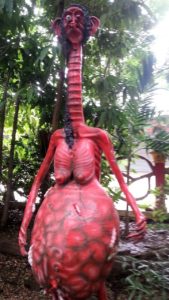 “What’s this?” I asked, pointing to a strange red monster.
“What’s this?” I asked, pointing to a strange red monster.
“He’s hungry ghost!” Kwan answered, a wicked twinkle in her eyes. “He was a very greedy man, and now he has a very big belly, but a very small mouth, see? He is always hungry!” imagine that, being hungry for sextillions of years.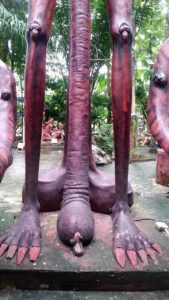 “And the…?” I asked, pointing to the oversized penis of another massive statue. It hung all the way to the floor, in front of large sagging balls. But she just giggled, too shy to speak about it.
“And the…?” I asked, pointing to the oversized penis of another massive statue. It hung all the way to the floor, in front of large sagging balls. But she just giggled, too shy to speak about it.
Next, we stumbled onto a naked couple being eviscerated by gloating guards whose eyes were red electric bulbs which could be lit for a fee. Further on, the red bulbs were in the eye-sockets of a sinner who had been tied to a chair, had his tongue and genitalia ripped off, and was being eviscerated by a temple guard. Further still, two tormented bodies were being ground by a machine which could be activated with a ten-baht coin, at which point the speakers boomed with agonizing wails.
The level of gory detail was mesmerizing, especially the preponderance of contorted sexuality: women’s vaginas being ravaged in all sort of ways, penises in perennial and bloodied erections, split lengthways by swords, necrotized by incessant use, or covered in pustules.
What shocked me the most was the idea of monks spending their time to construct such abominations. Weren’t they supposed to nurture a healthy mind? Yet some of the depictions looked like hard porn.
“Who built it?” I asked, to make sure. “The monks?”
“No,” she answered, dropping a coin in the machine activating a hand-cutting sword, probably designed as a punishment for thieves. “The head monk had a strong dream about it, and built all this to teach us what happens if we are bad. But the statues are built by the students of Mae Jo.”
What? Now I was even more shocked, imagining young kids researching the subject. How did the images affect them? But no one seemed to worry. The park was a favorite destination for school day-tours, and children of all ages meandered around looking at details, taking selfies, or chatting about apparently mundane things. Nobody seemed overtly shocked or terrified, not even the very young.
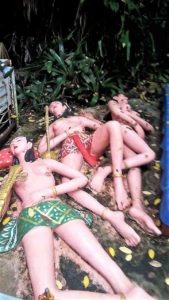 We took a turn, and entered a room where the statue of a monk burned in a papier-mâché pyre. It must have been an intermediate hell destined to host the reincarnations of bad monks, because from there we entered heaven.
We took a turn, and entered a room where the statue of a monk burned in a papier-mâché pyre. It must have been an intermediate hell destined to host the reincarnations of bad monks, because from there we entered heaven.
In heaven we found monks sitting in peaceful meditation in front of golden statues of ancient masters, maidens sleeping on soft grass mats, mother and child laying under a fan, all richly dressed of course. There was also a scene which reminded me of our Garden of Eden, but set around a massive fake tree with naked children frolicking in between the leaves. People below it were naked, except for a leaf covering their genitals.
All the statues looked peaceful, as if it was the garden of a royal palace. The section was far smaller than the hellish one, but I imagined everyone got the gist of it, that it was far better to accrue merit in this life than to sin.
Going back to the car I looked for the bird vendor, wanting to release a couple more. He was sold out.
Kwan’s English was too poor to answer my questions, and I spent the night doing some research. Here is what I found:
Being trapped in Saṃsāra – the endless cycle of death and rebirth – means being continually reborn as a god, a human, an animal, a hungry ghost, or as a citizen of hell, each state inhabiting a separate realm described in detail in Buddhist texts. This is not seen as a process of evolution but rather an aimless wandering from realm to realm, up and down, forever, responding to the person’s karma as it evolves through each life. As such, heaven and hell are only temporary placements, and people remain in them just long enough to atone for their sins or enjoy their merits.
In this system, Gods live somewhere in the sky and have long lives – meaning gazillions of years where every day is equal to one hundred human years – but are not eternal, since they are still part of Saṃsāra.
Contrary to what I believed, humans are considered the lucky ones, because theirs is the ideal state for the practice of Buddhism. Gods’ lives are too pleasurable, while those of the animals, ghosts, and citizens of hell are too painful. Only the world of humans has sufficient suffering to cause the wish to escape the cycle of Saṃsāra, but not so much to cause shock and paralysis.
Animals share our realm, and their suffering comes from always being in search of food, while trying to avoid becoming food themselves.
Hungry ghosts are always hungry or thirsty. They either have huge stomachs and tiny mouths, or a knotted throat through which nothing can pass. Those who do manage to eat, suffer when the food reaches their stomach as molten lead. They live in a world deep beneath the surface of the earth, but sometimes venture into the human one where they can be seen by monks with supernatural powers.
Citizens of hell can end up in one of many hells, depicted as caves below the hungry ghosts each dedicated to a different kind of sin. In Buddhism there are eight hot ones, eight cold ones, sixteen neighboring ones, and a number of minor ones.
Minor hells have no fixed location, and are places where the soul is always used or exploited. Suffering comes from becoming an object, like a mortar, a fireplace, or a piece of wood. As such, the soul can be burned, boiled, continuously pounded, or cut in smaller pieces.
Neighboring ones are lures, enticing the sufferer towards beautiful sceneries which then turn into places where – very slowly – the body is chopped by swords, or sinks into vermin infested pits, or falls into hot embers.
Cold ones are desolate lands of ice where snow is always falling, without any source of light and heat. Suffering comes from suppurating cold-blisters, the skin cracking or turning blue, leading to incessant shrieks of pain.
Hot hells are places where the ground is made of hot iron, where sufferers can be attacked by guards who continuously pour it in their throats, or slice them with hot metal claws and other fiery weapons. Alternatively, they can be places of tormented wondering amid fiery traps, like suddenly burning shelters or forests where the leaves are made of serrated blades.
The ideas I had about karma and reincarnation, the ideas about reincarnation shared by many in the ‘new-age’ spiritual circles, it turned out, were not the original ones but a softer, modern version, conveniently void of vengeful horrors and unbelievable unscientific stories like fiery hells below our feet. What else had I misinterpreted? Could I ever, really, understand another culture or faith without studying it for years and years?

